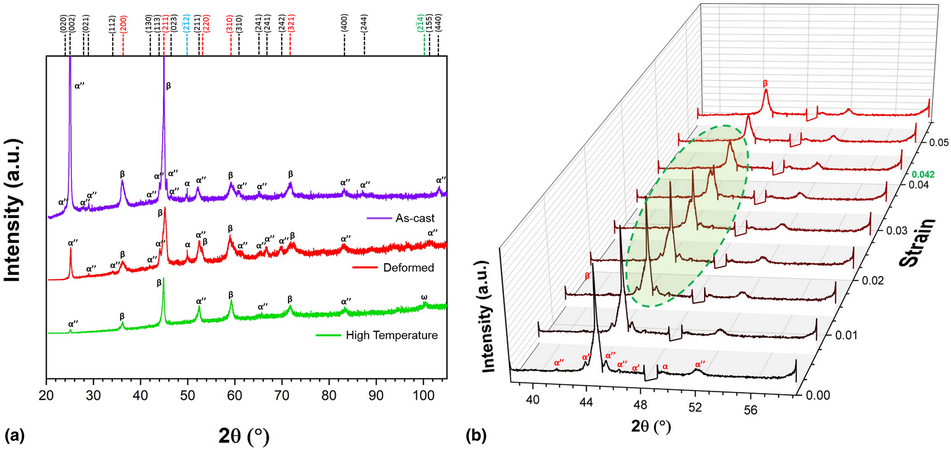Article contents
Influence of the deformation rate on phase stability and mechanical properties of a Ti–29Nb–13Ta–4.6Zr–xO alloy analyzed by in situ high-energy X-ray diffraction during compression tests
Published online by Cambridge University Press: 18 June 2020
Abstract

In this work, a Ti–29Nb–13Ta–4.6Zr–xO Gum Metal with two significantly different oxygen levels (388 and 3570 ppm) was investigated during deformation. The alloys were compressed during in situ high-energy X-ray diffraction using three different strain rates, 10−4, 10−3, and 10−1 s−1, in order to evaluate their influence on phase stability and mechanical properties. The influence of oxygen on the deformation process was also studied. Deformation takes place by twinning, stress-induced, and reverse martensitic transformation and was observed, for some samples, a spinodal decomposition of the β-phase during elastic deformation. The mechanical properties were similar for the different rates employed when considering the same oxygen level. The alloy with a higher amount of oxygen, however, showed a substantial increase in mechanical strength, with a yield strength of around 680 MPa, which is more than three times higher than for the specimen with 388 ppm of oxygen.
- Type
- Article
- Information
- Copyright
- Copyright © Materials Research Society 2020
References
- 9
- Cited by





